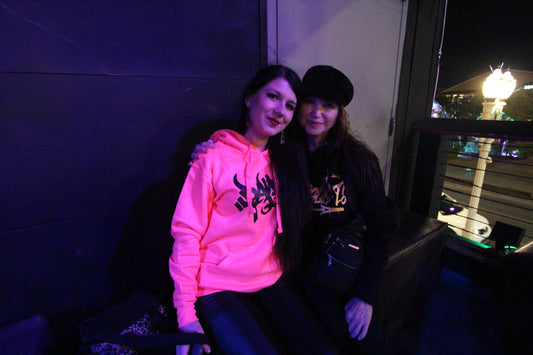
Breakdancer vs B-Boy / B-Girl Whats The Difference?
Share
Understanding the True Essence of B-Boys, B-Girls, and Breaking
In the vibrant tapestry of hip-hop culture, there exists a subculture as dynamic as the beats that define it: breaking. Often, those uninitiated or freshly introduced to this electrifying dance form find themselves tangled in the confusion of terminology. The misnomers "breakdancer" or "breakdancing" might echo in their minds, but within the realm of breaking culture, precision in language matters. Let's dive into the origins, meanings, and historical significance of the rightful terms: B-Boy, B-Girl, and breaking.
Unraveling the Origins
The genesis of these terms traces back to the pulsating heart of New York City's burgeoning hip-hop scene in the 1970s. As the rhythmic beats of DJs like Kool Herc and Grandmaster Flash echoed through neighborhood parties, a phenomenon unfurled. DJs would loop the 'break' of a track, unleashing an explosive energy that compelled dancers to the floor. It was this break(down) that birthed the dance form we now know as breaking. Thus, "break-boys" and "break-girls" emerged, affectionately abbreviated as B-Boys and B-Girls, paying homage to the break that ignited their movements.
Another narrative intertwines breaking's genesis with the Bronx, a landscape marred by strife and gang activities. For many youths navigating this turbulent terrain, these neighborhood gatherings offered a respite. The breakbeats spun by DJs became an anthem of release, infusing them with an exuberance that erupted on the dance floor—a cathartic 'breaking' point, birthing breakers, symbolic of a transformative release through dance.
Significance of Correct Terminology
At its inception, breaking wasn't merely a dance; it was a lifestyle, an embodiment of hip-hop culture. To be a B-Boy or B-Girl transcended mere movements; it was a comprehensive identity. It dictated attire, speech, musical preferences, and an affinity for the other pillars of hip-hop: graffiti, MCing, and DJing. Thus, using the correct terms pays homage to a cultural ethos, an ode to those who embraced breaking as a way of life.
Dispelling the Misconceptions
The misnomers "breakdancer" and "breakdancing" sprouted from the media's misinterpretation when showcasing B-Boys and B-Girls on television. As this captivating dance form gained global attention, a narrative emerged, albeit flawed. It took the pioneers' concerted efforts, traveling worldwide, conducting workshops, and sharing the true history, to rectify the misnomers. "Breakdancer" became synonymous with someone detached from the cultural roots of breaking, solely enamored by its physicality.
Beyond Competitions: Essence of B-Boys and B-Girls
The essence of being a B-Boy or B-Girl transcends competitive arenas. While battles are integral, they do not singularly define a breaker. Rather, it's the intimate connection to the dance, the pulse of hip-hop culture, that forges their identity. Participation in competitions is an extension, not the essence, of their existence within the breaking sphere.
Embracing the Cultural Journey
In revisiting many of Panic 39's Hosted B-Boy and Dance Battles, an emblematic convergence of breakers from diverse corners of the globe, the spirit of breaking echoes. It's a celebration that transcends competition, embodying the shared cultural legacy woven by B-Boys and B-Girls worldwide.








